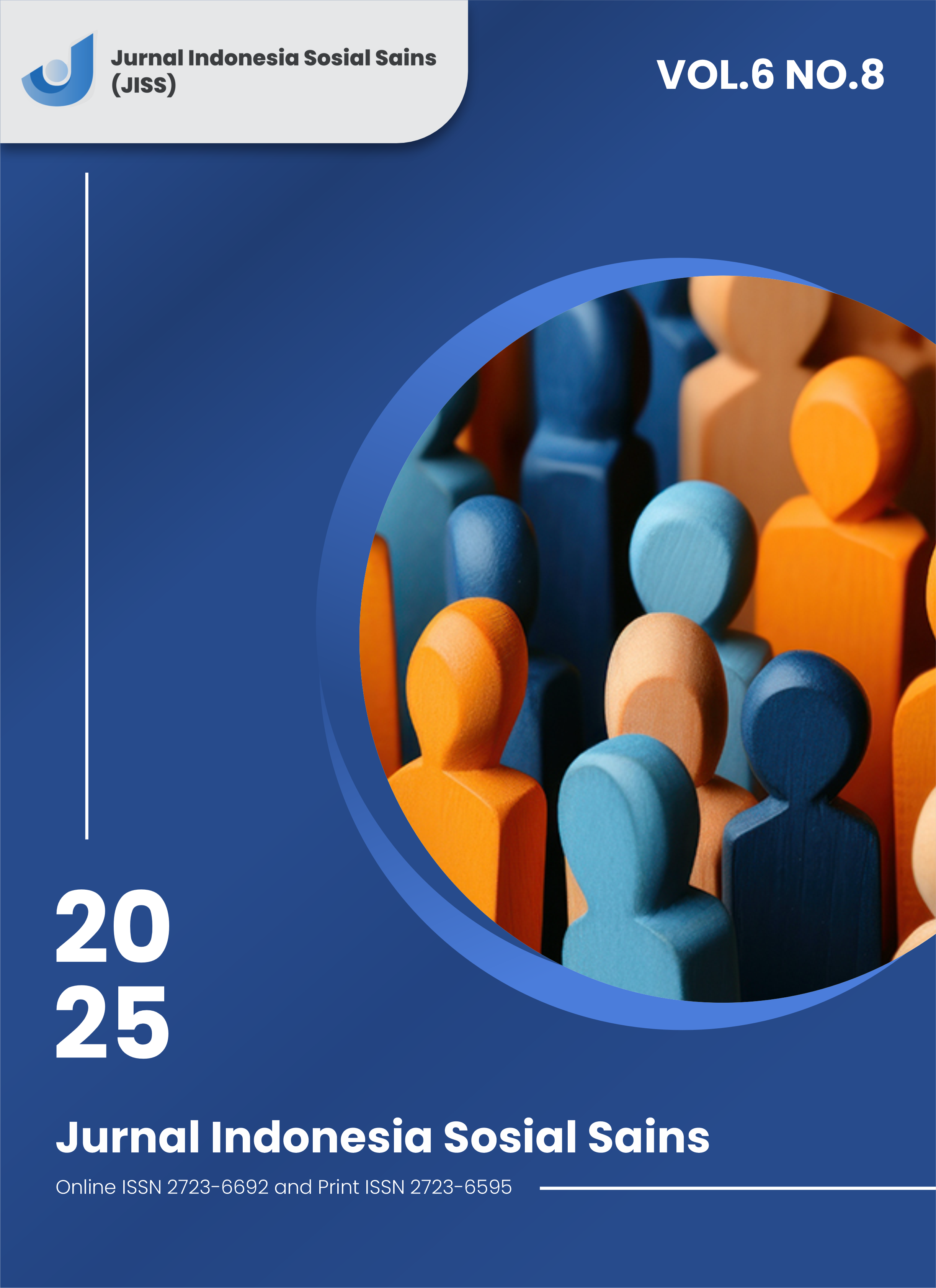The Four-Step Model Approach for Improving Public Transportation in Malang City
DOI:
https://doi.org/10.59141/jiss.v6i8.1844Keywords:
Fours-Step Model, Malang City, Public TransportationAbstract
Malang City, which is directed as a National Activity Center (NAC) as well as a center for education and trade and services, certainly faces major challenges in transportation management due to significant population, student and tourist growth. With a population of 847,182 people in 2023 and the dominance of private vehicle use, the city is ranked as the fourth most congested city in Indonesia based on the Global Traffic Scorecard in 2021. This article aims to provide recommendations for improving public transportation in Malang City using the Four-Step Model approach, which consists of trip generation, trip distribution, mode choice, and trip assignment stages. Each stage of the model is used to identify movement patterns, transportation mode preferences, and optimal travel routes. The data used is secondary data obtained from the Malang City Transportation System Planning Report (Itenas , 2020). The results show that Lowokwaru, Klojen, and Sukun sub-districts have the highest movement rates. The dominant educational, trade and service and residential activities in these areas generate a lot of movement to and from other sub-districts. In addition, mode choice analysis shows that the use of modes is dominated by private vehicles at 96% while public transportation is only 4%. Recommendations based on these findings include the expansion of public transport routes, fleet modernization, restrictions on private vehicles, and the development of electronic payment systems. The findings are expected to serve as a foundation for integrated and sustainable transportation planning for Malang City.
References
Hardini, H. K. (2018). Government Strategic Collaborative Partnership in Tourism Affairs A study in Malang and Batu City Governments. Jurnal Studi Pemerintahan, 354–377.
Andara, R., Ortego-Osa, J., Gómez-Caicedo, M. I., Ramírez-Pisco, R., Navas-Gracia, L. M., Vásquez, C. L., & Gaitán-Angulo, M. (2021). Behavior of traffic congestion and public transport in eight large cities in Latin America during the COVID-19 pandemic. Applied Sciences, 11(10), 4703. https://doi.org/10.3390/app11104703
Chuen, O. C., Karim, R. M., & Yusoff, S. (2014). Mode choice between private and public transport in Klang Valley, Malaysia. The Scientific World Journal, 2014, Article 394587, 14 pages. Malaysia: Hindawi Publishing Corporation.
CITEUS. (2024). The best scenario for the development of public green … Jurnal Perencanaan Kota. Universitas Malang.
Dorodjatoen, A. M. H. (2019). Addressing regional inequality [Doctoral dissertation, University of Western Australia]. University of Western Australia Research Repository.
Hafiz, A. A., Usman, F., Hidayat, A. R. T., & Zakiyah, D. M. (2025). Spatiotemporal dynamics of urban sprawl types in the peri-urban area of Malang Municipality, Indonesia. Urban Science, 9(8), 313. https://doi.org/10.3390/urbansci9080313
IIETA. (2025). Integrating urban design with natural dynamics: Enhancing ecological resilience in Malang City over a decade. International Journal of Sustainable Development and Planning. https://www.iieta.org/journals/ijsdp/paper/10.18280/ijsdp.200313
Kim, W. (2025). Impact of accessibility to educational facilities on public transport usage and urban sustainability. Sustainability, 17(9), Article 3920. https://doi.org/10.3390/su17093920
Kriswardhana, W. (2024). Heterogeneity in transport mode choice of college students: A study of user group differences. Case Studies on Transport Policy, 12(3), 100–112. https://doi.org/10.1016/j.cstp.2024.03.007
Kumar, R., Singh, P., & Sharma, A. (2021). Transportation planning using conventional four-stage modeling: An attempt for identification of problems in a transportation system. International Journal for Traffic and Transport Engineering, 11(2), 220–234. https://doi.org/10.7708/ijtte.2021.11(2).10
Larasati, S., et al. (2025). Effectiveness of supervision of … Legal Horizons Journal. https://legalhorizons.com.ua/lh/article/download/196/137
Larasati, S., et al. (2025). Urban infrastructure integration for inclusive and sustainable city services. Legal Horizons Journal.
Lee, J., & Kim, J. (2023). Accessibility indicators and topological modeling in transport network analysis. Applied Network Science, 8(1), 45. https://doi.org/10.1007/s41109-023-00581-4
Meyer, M. D. (2016). Transportation planning handbook (4th ed.). New Jersey: John Wiley & Sons, Inc.
Munoz, J. C., & Gschwender, A. (2019). The efficiency of bus rapid transit (BRT) systems: A dynamic congestion approach. Transportation Research Part A: Policy and Practice, 126, 236–256. https://doi.org/10.1016/j.tra.2019.06.013
Sonar, S. G., & Gaikwad, A. B. (2023). Global efforts towards integrated public transportation planning: A brief review. Transport Policy, 133, 1–10. https://doi.org/10.1016/j.tranpol.2023.02.005
Wee, B. V., Annema, J. A., & Banister, D. (2013). The transport system and transport policy: An introduction. UK: Edward Elgar Publishing.
Downloads
Published
How to Cite
Issue
Section
License
Copyright (c) 2025 Putri Amelya Alrasyid, Nindya Miatani Andaru, Ditha Nurrizkyta

This work is licensed under a Creative Commons Attribution-ShareAlike 4.0 International License.
Authors who publish with this journal agree to the following terms:
- Authors retain copyright and grant the journal right of first publication with the work simultaneously licensed under a Creative Commons Attribution-ShareAlike 4.0 International. that allows others to share the work with an acknowledgement of the work's authorship and initial publication in this journal.
- Authors are able to enter into separate, additional contractual arrangements for the non-exclusive distribution of the journal's published version of the work (e.g., post it to an institutional repository or publish it in a book), with an acknowledgement of its initial publication in this journal.
- Authors are permitted and encouraged to post their work online (e.g., in institutional repositories or on their website) prior to and during the submission process, as it can lead to productive exchanges, as well as earlier and greater citation of published work.












